By Jamie Oliver
Vines (as well as woody lianas) are a common and defining feature of tropical rainforests. Because they rely on rapid overgrowth of other plants for support, they are most frequently found in disturbed areas where there is ample light for rapid growth.
Vines and climbers share a growth form but (like animals that swim or fly) belong to many different and unrelated groups. They use a variety of methods to grow up from the forest floor and into the light near the canopy without having to invest in growing their own heavy and rigid trunks. Some climbers use thorns that catch on to adjacent leaves and branches, others use tendrils to clasp or twine around other plants, and others use modified roots to cling on to tree trunks.
1. Climbing Pandan (Freycinetia excelsa)
The climbing pandan is a very common leafy climber found growing up trees in the rainforest and is easy to see along Paluma walking tracks. It is related to the large Pandanus palm-like trees seen in open forests along the coast. Leaves are narrow and pointed with fine teeth along the margin near the base. Some stems can also be found growing along the ground near the base of their host tree.

Fruit are rarely seen but are red to orange elongate clusters of seeds. Flowers are surrounded by orange leaf-like bracts.
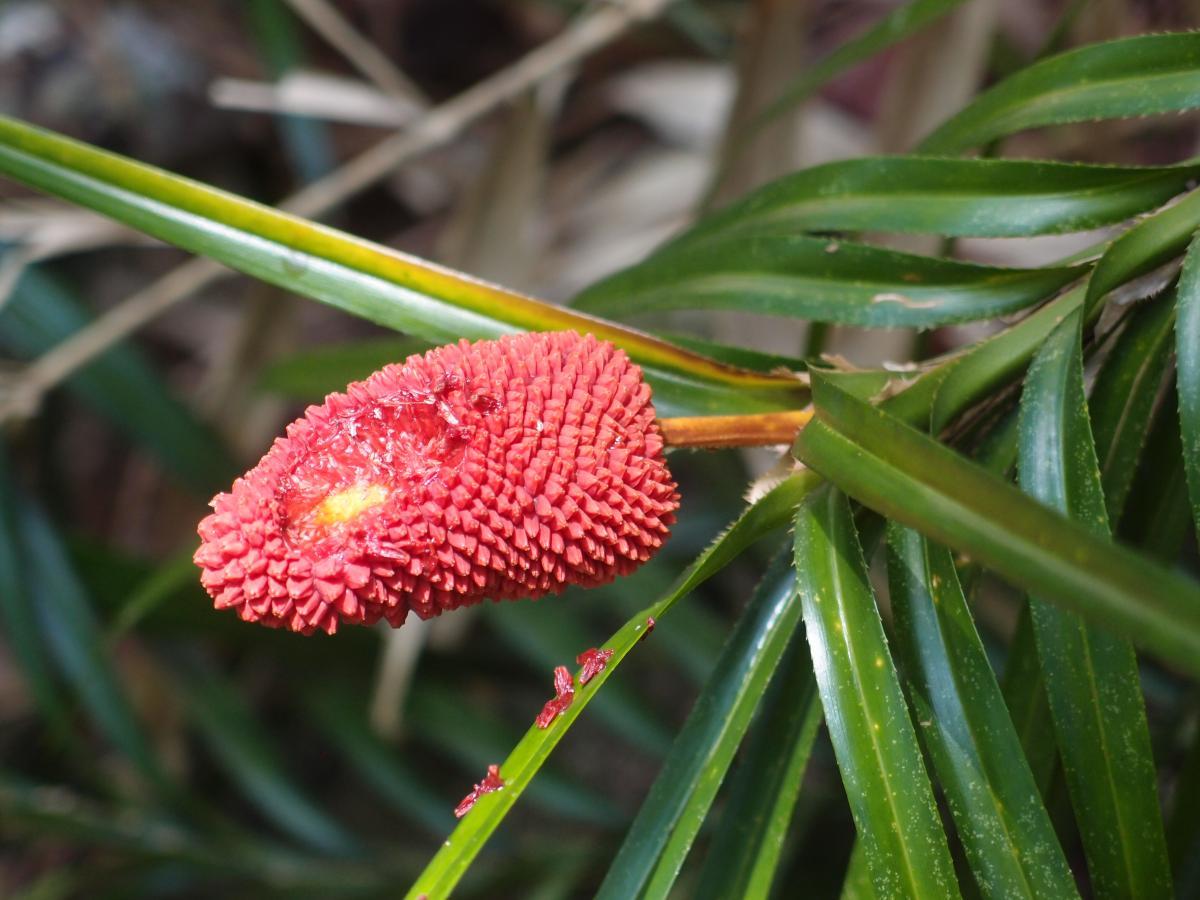
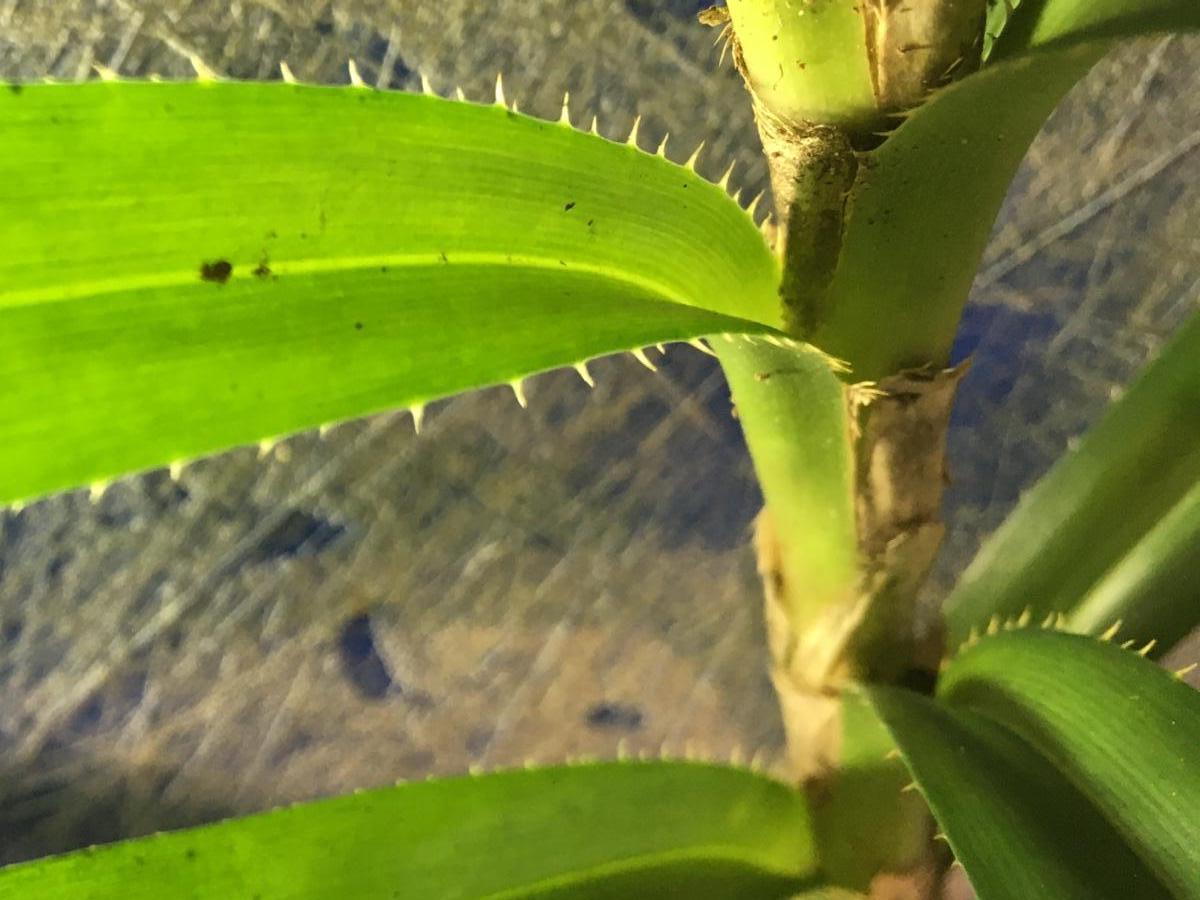
A second species of Freycinetia (F. scandens) also occurs around Paluma. It can be distinguished by its much broader leaves, which have a more uniform length.
2. Pothos or Candle Vine (Pothos longipes)
Pothos is another very common climbing plant found growing up tree trunks along the village tracks. The distinctive leaves provide the inspiration for its other common name – candle vine. The leaves have a constriction near the apex, with the remaining apical leaf portion shaped a bit like a flame. No other climber has this leaf shape. Pothos are another very common climbing plant found growing up tree trunks along the village tracks.
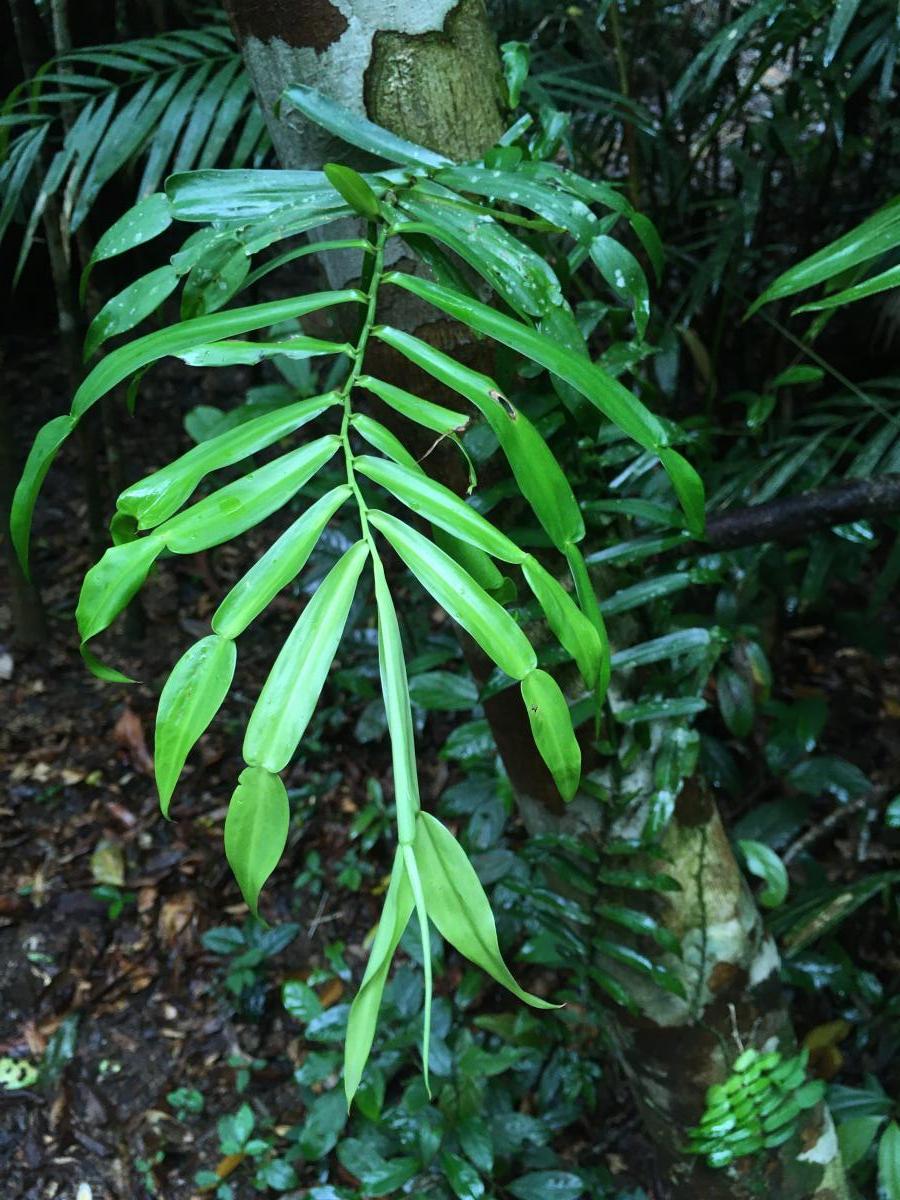
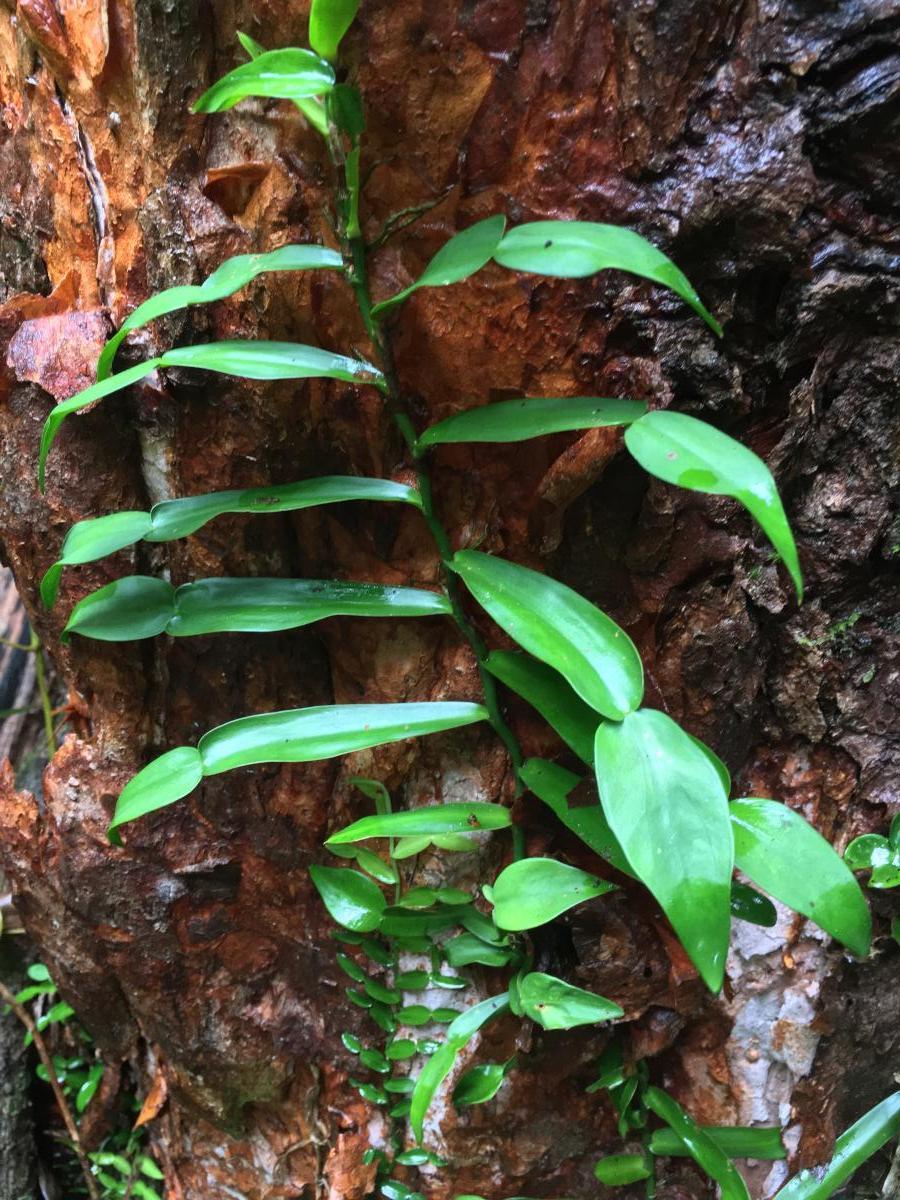
The leaves get progressively bigger as plant grows and change from upright and pressed against the tree trunk to long pendulous and downward-pointing. Larger stems can also be found growing along the ground near the bases of trees.
3. Yellow Lawyer Cane (Calamus moti)
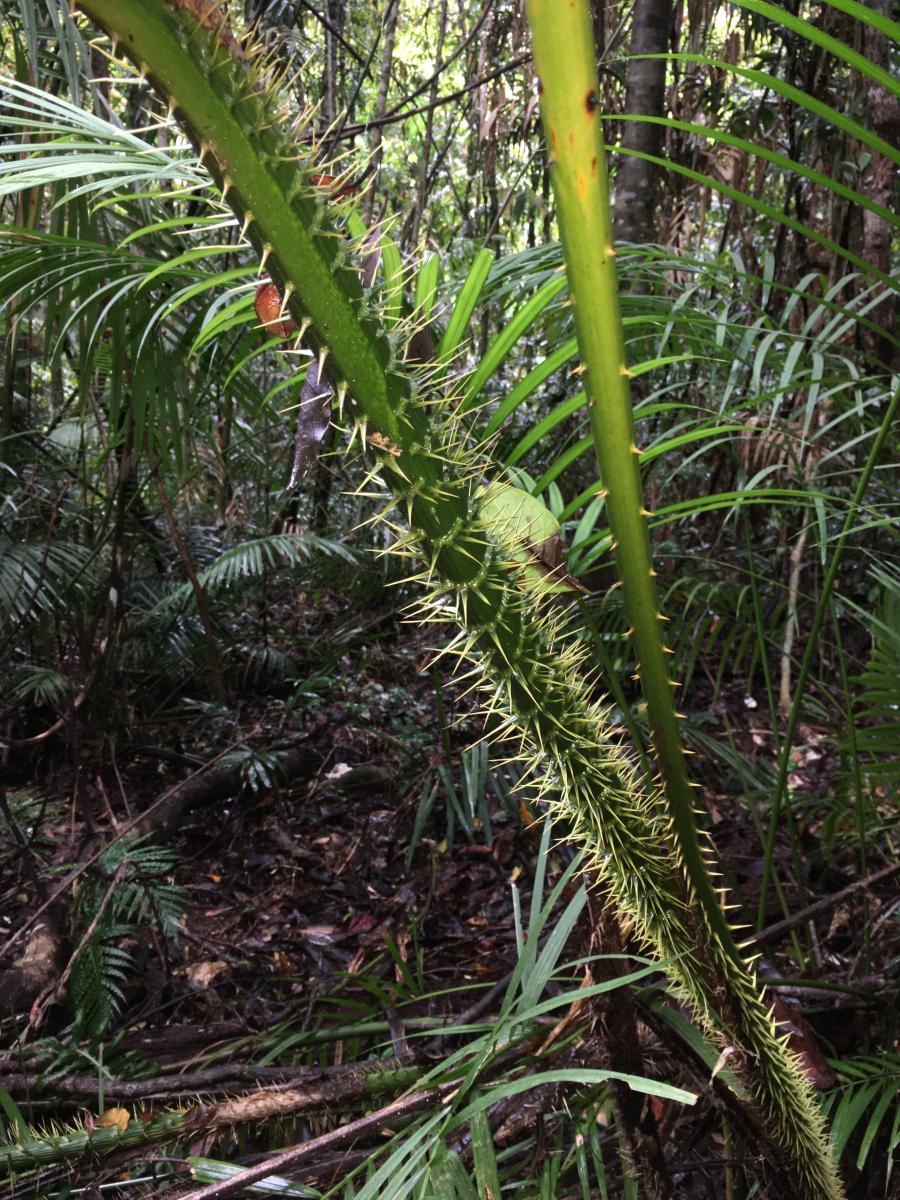
This is one of a group of climbing palms variously referred to as Lawyer Vine, Wait-a-while, or rattan. They are most frequently found in forest openings and gaps caused by fallen trees or cyclones.
Several species of lawyer vine or wait-awhile can be found around Paluma. The most readily identified is the Yellow Lawyer Cane with its distinctive, robust, yellowish spines arranged in diagonal spiral rows along the cane stems below the leaves. The canes are often noticeably thicker than in other species.
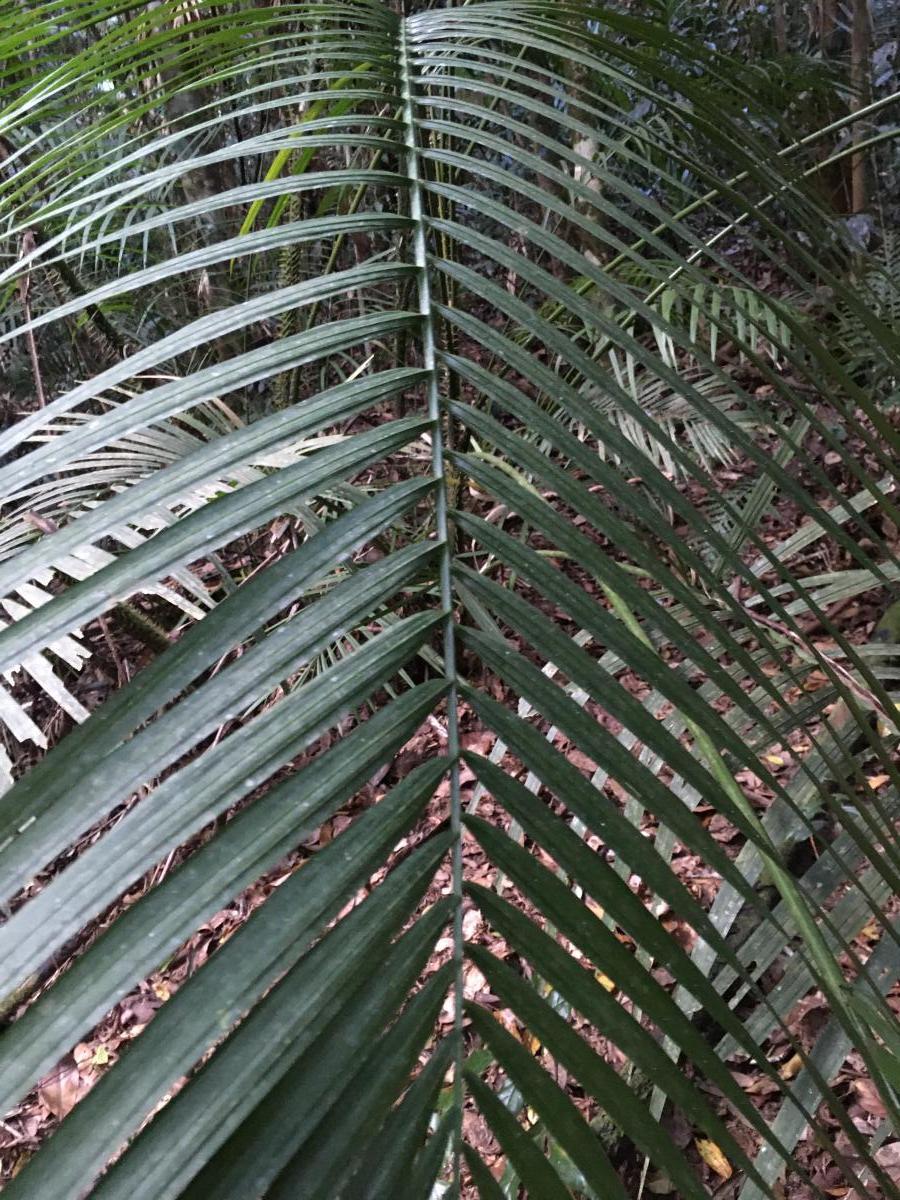
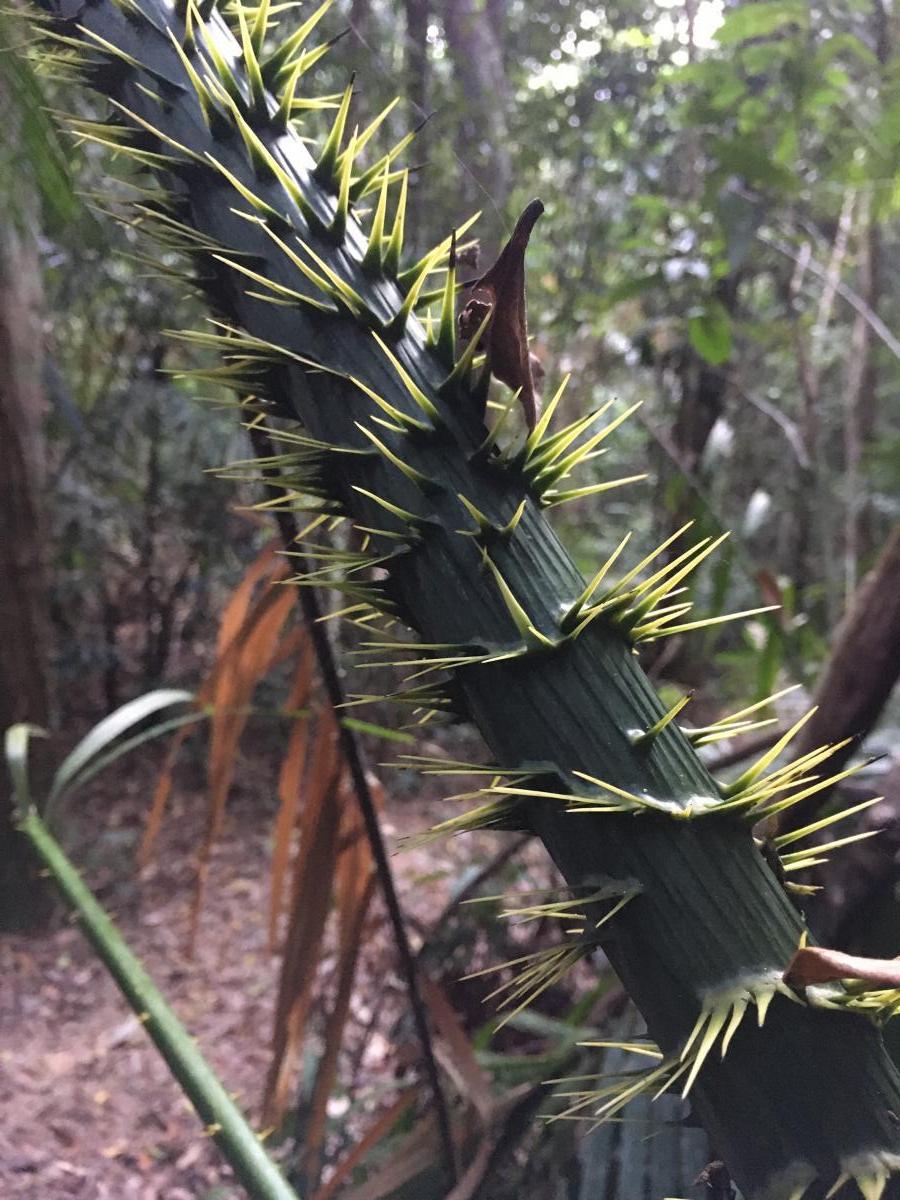
The other common species along the tracks is the Hairy Mary (Calamus australis), which has finer brown spines and a frond with broader leaflets.
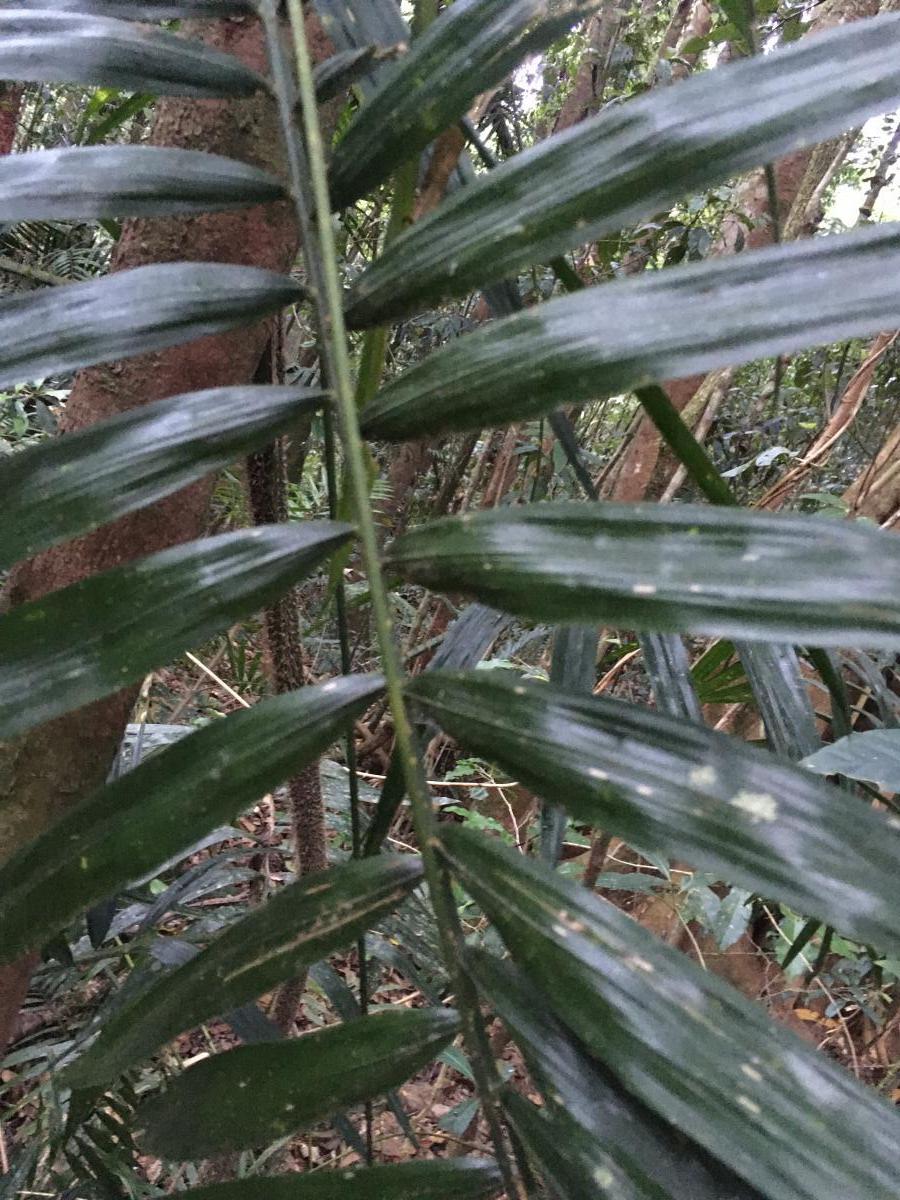
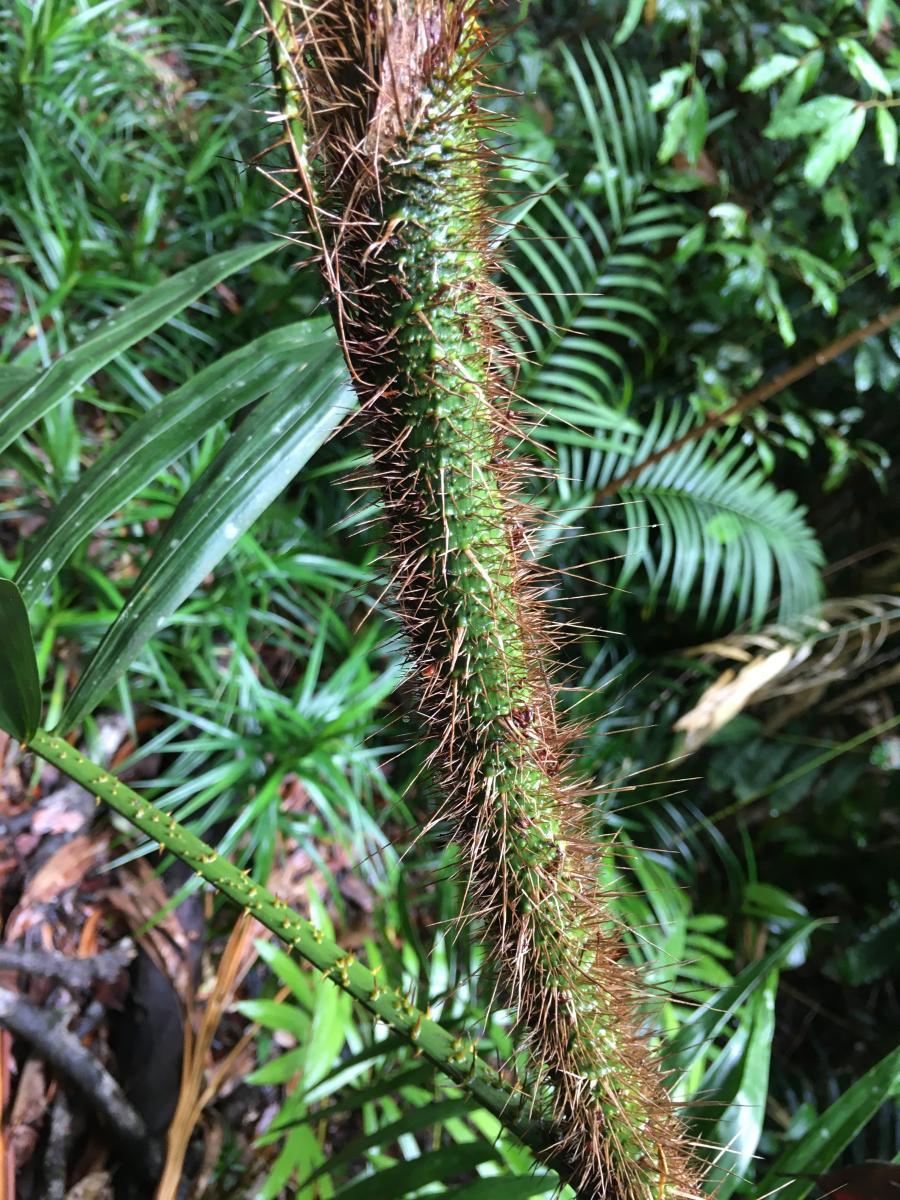
All species have palm-like leaves and spines growing from a sheath that covers the stem (cane). They also all have tendrils with vicious hooks emerging from the leaf bases. These tendrils hook on to adjacent trees which provide the support needed to climb up to the forest canopy. In older plants the lower part of the cane loses its leaves and spines and becomes a tangle of smooth flexible canes winding along the ground and up into the trees. In this form they clearly reveal rattan cane – the material that is widely used to make cane furniture.
4. White Supple Jack (Ripogonum album)
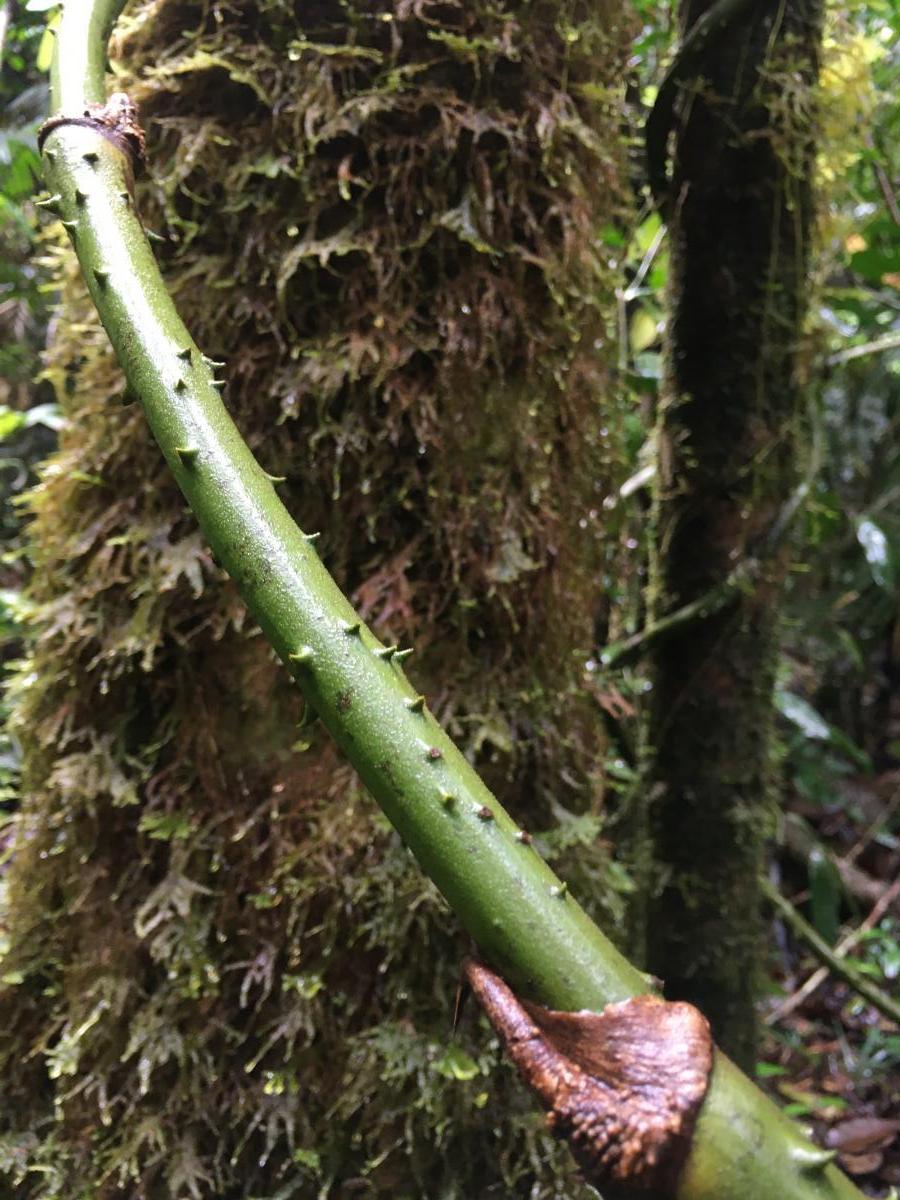
While this common vine has large bright green leaves, it is most easily identified by the leafless matt-green stems with irregular curved green spines that wind their way through the foliage at eye-level. The stems can be up to 3cm in diameter.
They are more common in areas that have been opened up to the light by a tree fall or along the margins of the rainforest around the village where there is ample light. There are some good examples of this vine along Lennox Crescent opposite the Paluma Pottery, and around the edge of the adjacent car park. Ripogonum has small white flowers and globular red fruit.
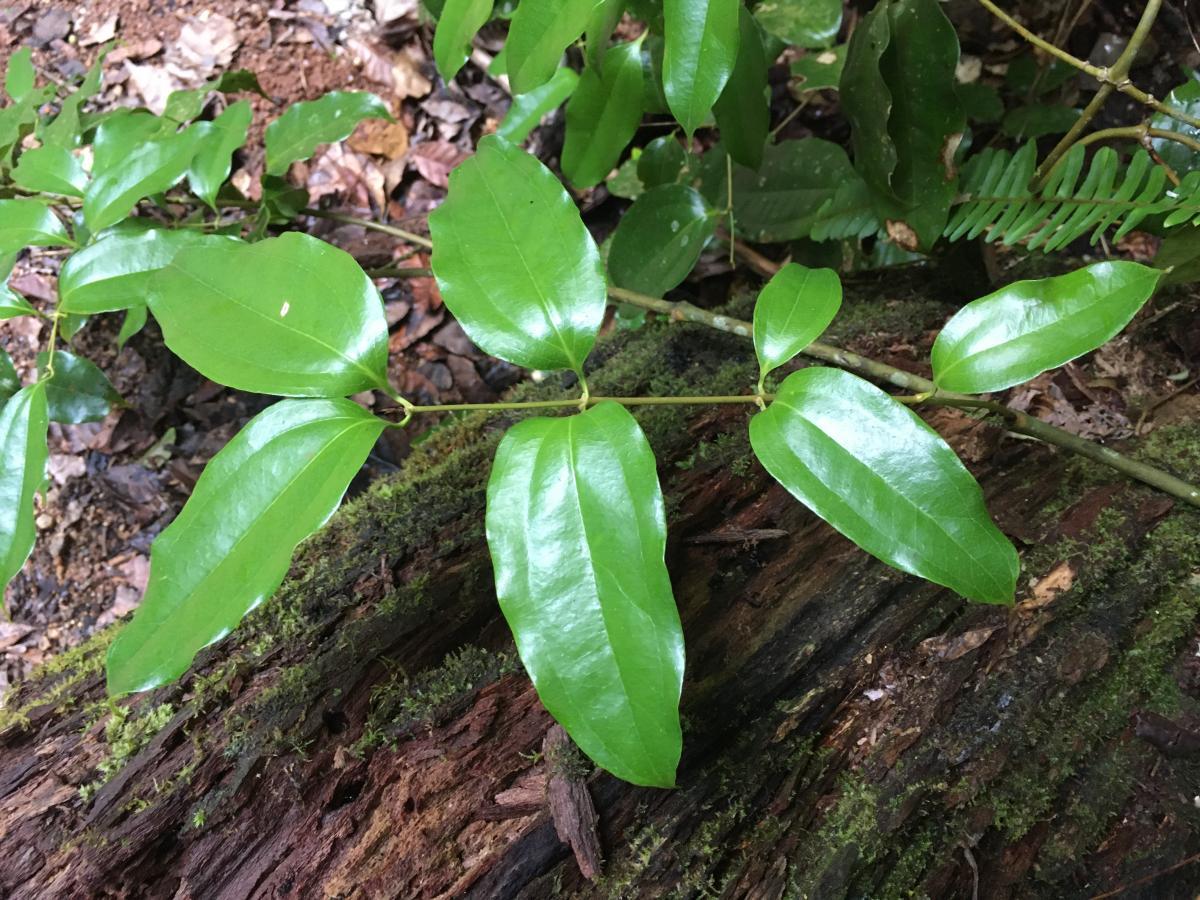
5. Atherton Raspberry (Rubus probus)
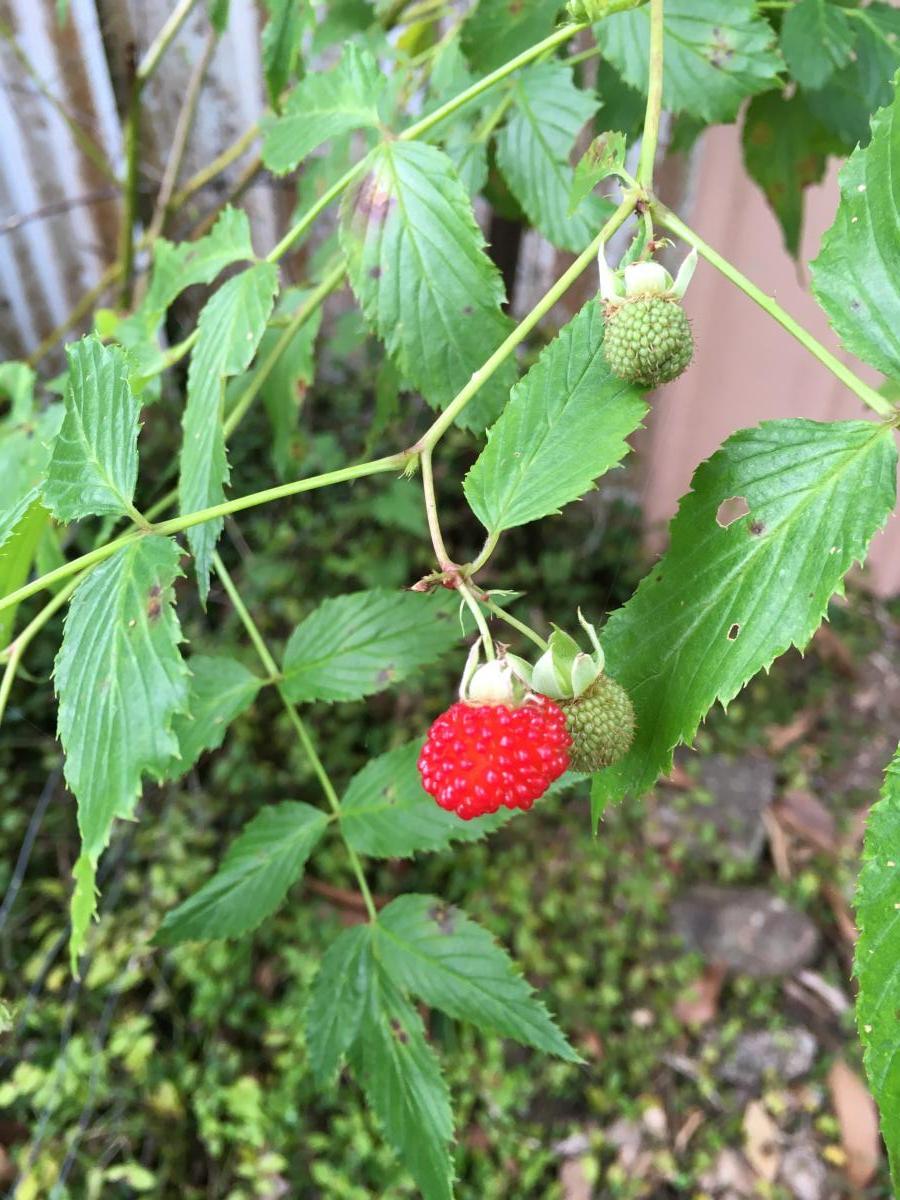
This rambling climber favours open areas and can be found in rainforest openings and at the start of the H-track on Whalley Crescent. There is another patch on the other side of the H-Track near the old fenced-off miner’s test pit and viewpoint over the adjacent creek. It usually grows no more than a few metres high and tends to lean over adjacent plants rather than growing up tree trunks towards the canopy.
R. probus has compound ovate leaves with 5-9 leaflets and the stems have widely-spaced fine thorns that are exceedingly sharp. The fruit looks like a small commercial raspberry.
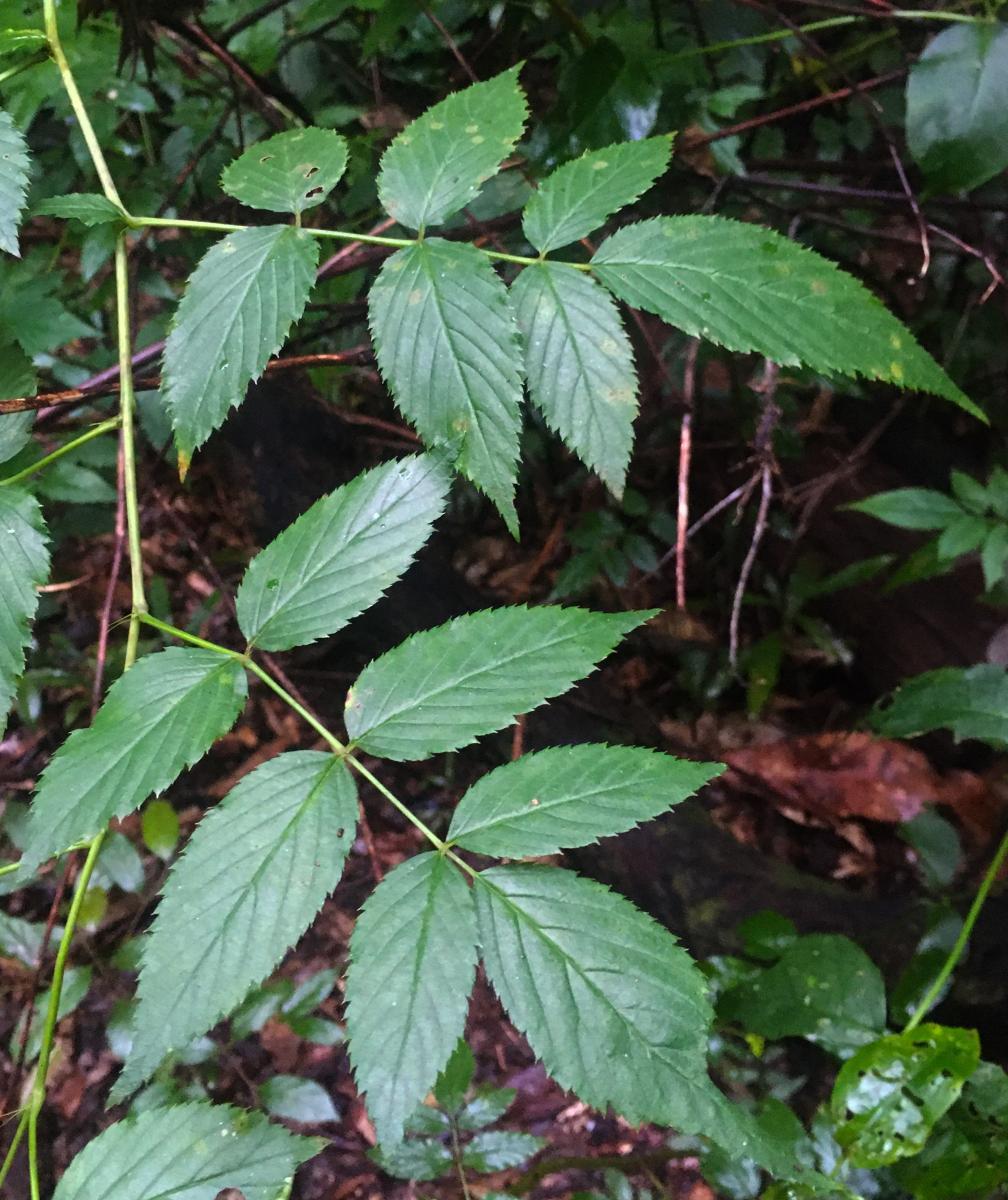

There are 3 other species of native raspberry which can occur around Paluma and one of these (R. queenslandicus) is very similar, with slightly narrower and more pointed leaves. Based on leaf width, most of the raspberry patches around the village appear to be R. probus, but it’s possible that some are R. queenslandicus. To be perfectly safe when casually encountering a raspberry around Paluma you can have a bet each way and refer to it as Rubus probus/queenslandica. The fruit of both species is edible

thanks for this informative post Jamie.. there was what I thought a raspberry plant on the Mount Spec road where the track to Smith crescent joins and of course I got right into the fruit and only after swallowing several, did I realise that they weren’t raspberries as such !
So I spent a few anxious hours wondering. Now that I know, I’ll be back.
Thanks Jamie. A very instructive article. At last, here is something which helps me to differentiate and identify some of the climbers and canes.